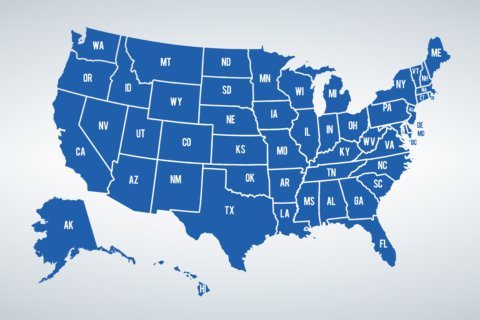In Georgia, election workers will have to hand count the number of ballots cast after voting is completed. In North Carolina, some students and university staff can use their digital IDs to vote. In Wisconsin, ballot drop boxes are newly legal again, although not every voting jurisdiction will use them.
Across the country, including in some of the nation’s presidential swing states, new or recently altered state laws are changing how Americans will vote, tally ballots, and administer and certify November’s election.
It can be a challenge to keep track of these 11th-hour changes, especially since state election processes already vary so widely. Even more changes are looming in some states, with Election Day on Nov. 5 now just weeks away. Several states already have started sending out mail ballots, and in some states, voters have begun casting ballots in person.
“Last-minute changes to election rules — whether from a state legislature, an election authority or a court — can lead to confusion for voters and election officials,” Megan Bellamy, vice president of law and policy for the Voting Rights Lab, said in an email response. “Election season is underway. Lawmakers, administrative bodies and courts must recognize that.”
Here’s a look at some of the election processes that are new or have been recently modified.
New hand-counting requirements
Georgia and Arizona will both require election workers to do hand counts at polling sites on Election Day. Election officials say it could delay the reporting of results.
The Georgia State Election Board passed its new rule on Friday. It requires that the number of ballots — not the number of votes — be counted by hand at each polling place by three separate poll workers until all three counts are the same.
Georgia voters make selections on touch-screen voting machines that print out paper ballots. Those ballots include a list of the selections so voters can verify their accuracy and a QR code that is read by a scanner to tally the votes.
Proponents say the new hand-count rule is needed to make sure the number of paper ballots matches the electronic tallies on scanners, check-in computers and voting machines. The three workers will have to count the ballots in piles of 50, and the poll manager needs to explain and fix, if possible, any discrepancies, as well as document them.
The rule goes against the advice of the state attorney general’s office, the secretary of state’s office and an association of county election officials. Critics worry it could delay the reporting of election night results, undermining public confidence in the process.
A similar change to state law this year in Arizona is also likely to cause delayed results in the swing state this fall. It requires counties to hand count ballot envelopes that are dropped off at polling centers on Election Day before the ballots are tabulated.
After the July primary, Maricopa County Elections spokesperson Jennifer Liewer said the new step resulted in a roughly 30-minute delay in reporting the county’s results, and said the impact could be greater in the general election “if we have hundreds of thousands of ballots dropped off.”
Maricopa County, which includes Phoenix, estimates between 378,000 and 504,000 voters will drop off their ballots on Nov. 5.
JP Martin, a spokesperson for Arizona Secretary of State Adrian Fontes, a Democrat, said in an email that the mandate to count ballot envelopes will “require considerable time, particularly since poll workers have already completed a 12-15-hour shift.”
Changes for early and mailed ballots
Chaos and disinformation about mail-in ballots and drop boxes have prompted partisan disagreements — and new rules — in several states over how these accessible voting methods should be used.
In Wisconsin, the then-conservative majority state Supreme Court outlawed drop boxes in 2022. But a new liberal majority on the court made them legal again in July. Some communities opened them for the state’s August primary, but more will be in use for November.
Their use in Wisconsin is voluntary and some conservative towns have opted against using drop boxes, citing security concerns. The state’s two most heavily Democratic cities, Milwaukee and Madison, used them in August and will again in November.
Ohio Secretary of State Frank LaRose, a Republican, issued a directive to county election boards in August that said only a voter can drop their personal ballot in a drop box. Anyone who assists someone else must return that ballot inside the county board office and complete an attestation form.
In Pennsylvania, a court battle is pending at the state Supreme Court that could decide whether counties must count provisional ballots cast by voters whose mail-in ballots were rejected for relatively minor mistakes, such as not inserting the ballot into an inner secrecy envelope. Practices vary by county and state law is silent on it. Republicans have argued that nothing in state law explicitly allows a voter to cast a provisional ballot in place of a rejected mail-in ballot.
Separately, the Pennsylvania state Supreme Court earlier this month threw out a case on a technicality after a lower court had ruled that rejecting mail-in ballots for “meaningless and inconsequential paperwork errors” — such as a missing handwritten date — violates the constitutional right to vote. As a result, counties are expected to continue the practice of disqualifying those ballots. Some counties — primarily Democratic ones — strive to help voters fix those errors or cast a provisional ballot instead.
This is the first presidential election since Florida’s Republican-controlled Legislature made a series of changes to mail balloting in 2021. While those aren’t recent changes, their impact could be significant this year in a state that traditionally has had robust interest in voting by mail. One change makes a voter’s request for a mail ballot valid only for the next general election, rather than two general election cycles, meaning voters will have to reapply. Requesting a mail ballot also now requires a driver’s license number, state ID number or last four digits of a Social Security number.
Verifying a voter’s identity
In North Carolina, the State Board of Elections last month voted that students and staff at the University of North Carolina at Chapel Hill could show digital identifications on their smartphones to qualify to vote under the state’s recently implemented photo voter ID law.
It marked the first such digital ID the board has approved. Republican groups sued, contending that state law only allows physical cards.
A trial judge last week refused to block its use. Republicans have since filed an appeal notice. Only mobile IDs issued by UNC-Chapel Hill on Apple phones have been approved for use.
In Arkansas, a federal appeals court decision last week reinstated a rule that bans electronic signatures for voter registration. The state Board of Election Commissioners approved the rule in April, saying the state’s constitution allows only certain agencies, and not elections officials, to accept electronic signatures. Under the rule, voters will have to register by signing their name with a pen.
It was adopted after nonprofit group Get Loud Arkansas helped register voters using electronic signatures. The board said the rule was needed to create uniformity across the state.
The board’s director asked county clerks to identify any registration documents submitted using electronic signatures after the appeals court decision and make every effort to contact the voters as soon as possible to give them the chance to correct their application.
After the votes are in
Election administration doesn’t stop when the polls close, and a few states will have new processes in the post-election period.
The same Georgia election board that ordered counties to hand count the number of paper ballots had just weeks earlier passed new rules related to certification of the vote. One change provides for a “reasonable inquiry” before county election officials certify results, without defining what that means. Another allows county election officials “to examine all election-related documentation created during the conduct of elections.”
Democrats have sued to block the new rules, saying they could be used by local officials who want to refuse certification if they don’t like the election results.
In New Hampshire, Gov. Chris Sununu signed legislation in July that establishes postelection audits. It took effect in time for New Hampshire’s late state primary on Sept. 10 and will apply to general elections.
The audits allow the secretary of state’s office to check that electronic vote-counting equipment functioned properly. Ten polling locations were chosen at random.
The audit of electronic ballot counting devices was determined successful by the appointed audit team, with all results within expected margins.
In Nebraska, former President Donald Trump’s allies were pushing for the state to change how it allocates electoral votes to prevent Vice President Kamala Harris from potentially claiming one of them by carrying the state’s congressional district for the Omaha area. But that effort appears doomed because a Republican state senator said he wouldn’t support it, denying backers the two-thirds majority they would need to get it through the Legislature and into law before the Nov. 5 election.
“After deep consideration, it is clear to me that right now, 43 days from Election Day, is not the moment to make this change,” state Sen. Mike McDonnell of Omaha said Monday.
Maine is the only other state that allocates Electoral College votes by congressional district.
___
Associated Press statehouse reporters across the country contributed to this report.
___
The Associated Press receives support from several private foundations to enhance its explanatory coverage of elections and democracy. See more about AP’s democracy initiative here. The AP is solely responsible for all content.
___
In a story published Sept. 24, 2024, about state election rules, The Associated Press erroneously reported the number of mailed ballots expected to be dropped off at voting locations in Maricopa County, Arizona, on Election Day. The number estimated is between 378,000 and 504,000, not between 625,000 and 730,000.
Copyright © 2025 The Associated Press. All rights reserved. This material may not be published, broadcast, written or redistributed.





